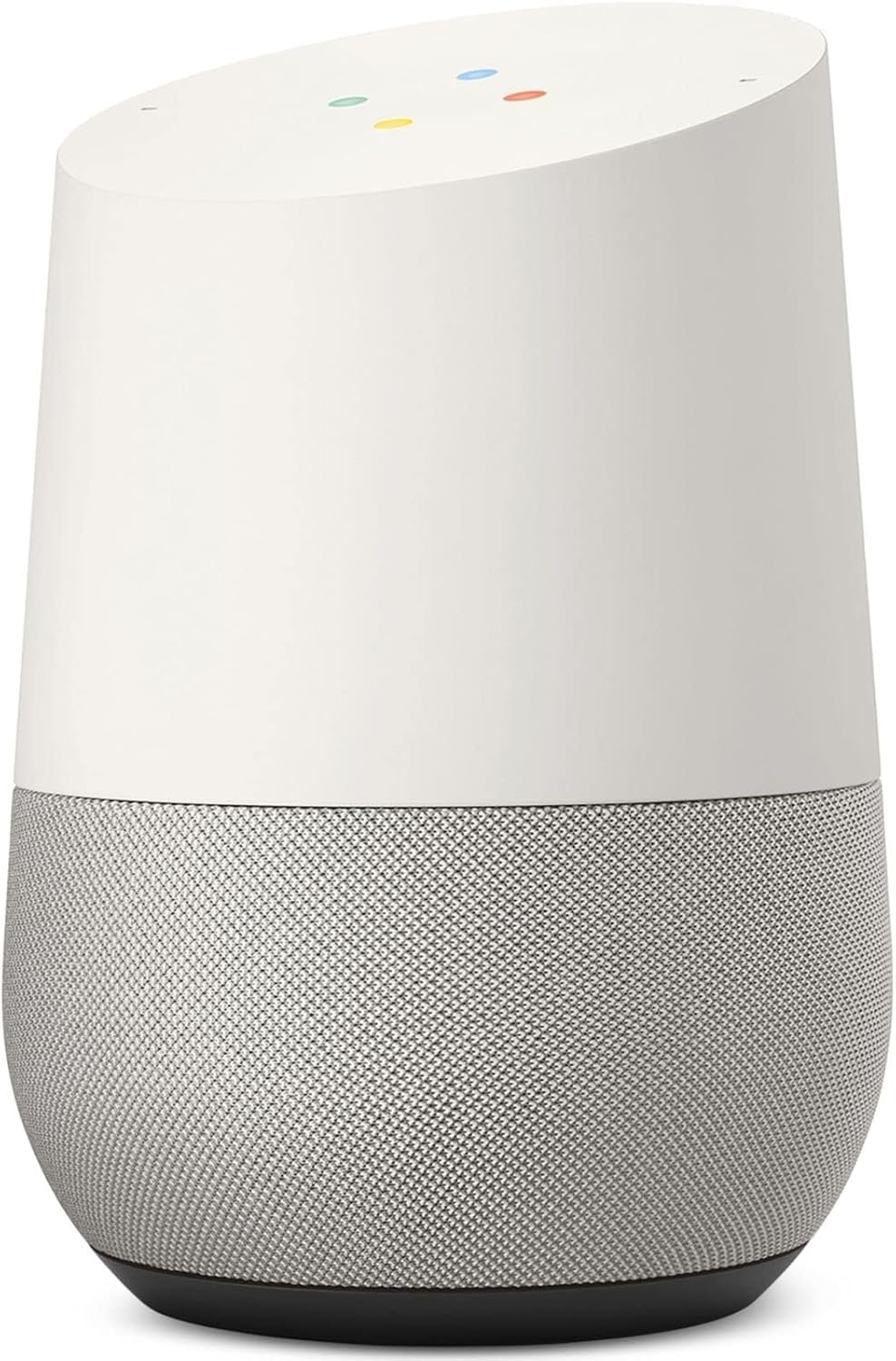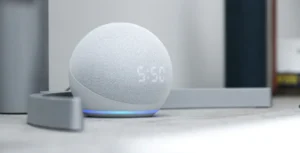As someone who rents a cozy apartment filled with smart gadgets, I used to waste energy (and money) without even realizing it. That all changed when I started experimenting with energy-efficient routines with Alexa or Google Home.
If you’ve ever walked out the door and suddenly wondered, “Did I turn the lights off?” — you’re not alone.
These smart assistants aren’t just for playing music or checking the weather — they can help you automate your daily habits, save power, and lower your utility bills without sacrificing comfort.
Let’s dive into how you can create smart, energy-efficient routines that actually make a difference.
Why Energy-Efficient Routines Matter
We all know that saving energy helps the planet, but when your electricity bill arrives, it’s clear it also helps your wallet.
The beauty of energy-efficient routines with Alexa or Google Home is that they make small savings automatic — and those small savings quickly add up.
You don’t have to be a tech genius. You just need a few compatible devices (like smart plugs, smart lights, and a thermostat) and a bit of creativity.
Also read: How Smart Plugs Reduce Your Energy Bills
Step 1: Start with Smart Lighting
Smart Lighting is one of the easiest and most satisfying places to start.
Both Alexa and Google Home let you create schedules, motion-based routines, or even automate brightness based on the time of day.
Here’s how I set up my lighting routine:
- Morning: At 7 a.m., my smart bulbs turn on to 50% brightness with warm light — no harsh wake-up call.
- Daytime: At 10 a.m., the lights turn off automatically if I’m out of the apartment.
- Evening: At sunset, my living room lights gradually brighten to 70%.
- Night: At 11 p.m., all lights turn off (except a small night lamp).
This simple setup not only creates a cozier atmosphere but also reduces energy waste from lights left on all day.

The Amazon Echo Dot 5 Gen is a compact smart speaker with surprisingly rich, vibrant sound and built-in Alexa support — perfect for bedrooms, dining rooms, or offices where you want convenient voice control and a stylish, modern design.
- Excellent sound quality for its small size with improved bass and clarity
- Seamless Alexa integration for music, smart home control, and routines
- Fast response time and reliable voice recognition
- Energy-saving mode helps reduce power consumption
- Affordable entry point into Amazon’s smart home ecosystem
- No battery — must be plugged in at all times
- Limited stereo output (though you can pair two for better sound)
- Dependent on Wi-Fi connection for most features
- Alexa ecosystem only — not compatible with Google Assistant or Siri
- No built-in Zigbee or Matter hub like in higher-end Echo models
Step 2: Automate with Smart Plugs
If you’re new to smart homes, smart plugs are your best friend.
You can plug almost any device into them — lamps, coffee makers, humidifiers — and control or schedule them through Alexa or Google Home.
Energy-efficient routines with Alexa or Google Home become especially powerful here.
For instance:
- Automatically turn off your TV, chargers, or fans when you leave home.
- Power on the coffee maker at 7:30 a.m. only on weekdays.
- Cut standby power drain (known as “vampire energy”) by switching off unused devices at night.
This kind of automation not only saves energy but also makes your mornings smoother.
More about smart plugs can be found in the post: Best Smart Plugs in 2025: Complete Buyer’s Guide.
Step 3: Use Smart Thermostats for Maximum Savings
Heating and cooling systems are responsible for a huge chunk of household energy use.
A smart thermostat learns your schedule and adjusts automatically — and with Alexa or Google Home, you can take that to the next level.
Here’s how I made my thermostat routine more efficient:
- When I leave home: Alexa turns the temperature down 3°C in winter or up 3°C in summer.
- Before I get home: Google Home detects my phone location and restores my preferred temperature.
- At night: Both systems lower the heating automatically for better sleep and lower bills.
Even minor adjustments like this can reduce energy consumption by up to 20% per month.

The Google Home Smart Speaker is an elegant and powerful voice-controlled device designed to make your everyday life easier — from managing your schedule and playing music to controlling smart home devices — all with just your voice and the power of the Google Assistant.
- High-quality audio with clear vocals and balanced bass
- Seamless Google Assistant integration for smart home automation and information requests
- Supports multi-room audio and Chromecast streaming
- Easy setup and intuitive Google Home app
- Integrates with thousands of smart devices from various brands
- No battery power option — requires constant plug-in
- Limited customization compared to third-party smart speakers
- Less compatible with Alexa- or Apple HomeKit-exclusive devices
- Can sometimes misinterpret commands in noisy environments
- Audio output not as strong as newer Nest Audio models
Step 4: Add Motion Sensors and Schedules
You can supercharge your energy-efficient routines with Alexa or Google Home by integrating motion sensors.
For example:
- Turn lights on when motion is detected — and off after 5 minutes of inactivity.
- Switch off the bathroom fan when you leave.
- Use smart plugs with presence detection to turn off devices when no one’s home.
These routines are easy to create through the Alexa or Google Home app — no coding, no electrician, no stress.
Step 5: Combine Routines for Smarter Energy Use
Once you get comfortable, combine different devices into one “scene” or “routine.”
Here are a few examples you can try:
Morning Routine
- Open curtains automatically (if you have a smart motor like the Zemismart one).
- Turn on the lights at low brightness.
- Heat water with a smart kettle or turn on a coffee maker.
Leaving Home Routine
- Turn off all lights and devices via smart plugs.
- Adjust thermostat settings for energy savings.
- Lock smart doors and activate security cameras.
Bedtime Routine
- Dim all lights to 10%.
- Turn off entertainment devices.
- Set thermostat to “eco mode.”
Once you build these routines, you’ll wonder how you ever lived without them.
Step 6: Track Your Energy Usage
Some devices let you monitor energy consumption directly from the Alexa or Google Home app.
You can see how much power your smart plugs, lights, and other devices use, and adjust routines accordingly.
Pair this with smart meters or apps that display real-time data — it’s eye-opening to see how small changes can make a big difference.
Alexa vs Google Home: Which Is Better for Energy Efficiency?
| Feature | Alexa | Google Home |
| Ease of Setup | Very beginner-friendly | Simple, intuitive interface |
| Energy Routines | Excellent for device grouping and automation | Great integration with Google services |
| Smart Plug Support | Wide range of compatible brands | Slightly fewer options but high reliability |
| Scheduling Options | Advanced schedules and conditions | Works best with Google Assistant routines |
| Integration with Smart Thermostats | Excellent with Ecobee, Honeywell, and Nest | Best performance with Nest ecosystem |
| Voice Accuracy | Very responsive | Slightly more natural language recognition |
| Best For | Amazon ecosystem users | Google ecosystem users |
Both systems are powerful and easy to use — it really depends on which ecosystem you’re already invested in.
If you have Echo devices, Alexa makes more sense; if you’re into Android or Nest, Google Home feels more natural.
Mistakes to Avoid When Setting Up Energy-Efficient Routines
- Overcomplicating your setup — start simple and expand gradually.
- Using devices on different ecosystems — try to keep everything Alexa- or Google-compatible.
- Forgetting manual overrides — sometimes you just want to press a button!
- Not testing automations — make sure your “away” routines don’t turn everything off while you’re still home.
- Ignoring app permissions — energy data and geolocation settings need proper access to work seamlessly.
How Much Can You Save?
According to multiple smart home studies, households that use energy-efficient routines with Alexa or Google Home save between 10–30% on their annual energy bills.
And it’s not just about money — it’s about building habits that are better for the planet.
Whether it’s turning off your lights, automating your thermostat, or managing your plugs — every small action counts.
Final Thoughts
As someone who started small — with a couple of smart bulbs and one Alexa routine — I can honestly say that automation has changed the way I manage my home.
Now, I save energy effortlessly and actually enjoy my daily routines.
If you’re just starting, begin with one or two simple automations.
Before long, you’ll find that your home practically runs itself — smarter, greener, and more efficient than ever.
Some of the links at our site are affiliate links; we may earn a small commission if you buy through these, at no extra cost to you.








